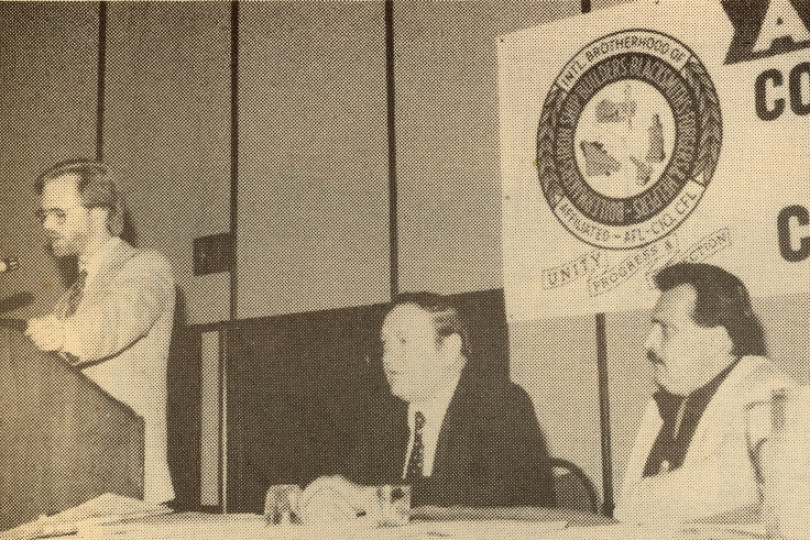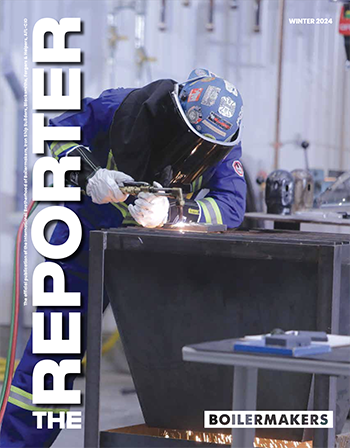The Fight Back Construction Organizing program was created in the 1980s as a response to a growing number of workers in construction becoming nonunion, many who’d worked as Boilermakers. During periods of high labor demand, local lodges often used permit workers to fill jobs. While they weren’t members, they worked alongside Boilermakers and gained skills through the union hall. But when labor demand cooled, they hopped the fence and went nonunion.
While the 1960s and ’70s were good decades for union industrial construction, by 1980, nonunion contractors were readily able to provide skilled crews at a time when the volume of work was declining. And many companies, signatory to the Boilermakers, bifurcated to have a union and a nonunion side. The Brotherhood’s share of industrial construction work declined rapidly, leaving many members out of work.
That was the climate when then-IVP-SE C.W. Jones, IR Connie Mobley and L-30 President Barry Edwards met in the early 1980s to discuss how to increase market share. Within a few years, then-Director of Organizing and Communications Newton B. Jones became the principal architect of a new kind of organizing—the Fight Back Construction Organizing program. It was deceptively simple: get Boilermaker volunteer organizers hired by nonunion employers, then organize workers from within. Once on the inside, they followed the lead of the organizing department, which continually developed new strategies to win back members.
One strategy, which is still reverberating today, was the legal aspect of the Fight Back program. Once an employer knew a worker was organizing, they wanted them off the jobsite as soon as possible. This often meant firing workers who organized, an activity the National Labor Relations Board frowns upon. And prosecutes.
This strategy resulted in the NLRB issuing hundreds of complaints against dozens of contractors. And the members who volunteered for these nonunion jobs—and were subsequently fired—received back pay awards. Some of the cases resulted in landmark NLRB and court decisions that set new standards for organizing in the construction industry.
Boilermakers litigated many of these cases, experiencing a win ratio near 90%. The success of Fight Back, in just the first two of the many years it was in operation, clawed back jobs worth nearly $1 billion in wages and benefits. Jobs were also unionized through Fight Back campaigns.
The program spread to Canada where Local 359 (Vancouver, British Columbia) and Local 146 (Edmonton, Alberta) forced the nonunion GLM Corporation to use union labor in a new gold mine that opened in British Columbia in 1987. In January 1988, Canadian Boilermakers led the Canadian Building Trades in blocking BK&K, a nonunion Alabama-based company, from manning a multi-million-dollar expansion at a Champion Paper plant in Hinton, Alberta.
Despite the uphill climb to get the work back including violence wrought upon union members and opposition from the nonunion, the program was highly successful and helped to preserve and build the Brotherhood during changing and challenging times.






